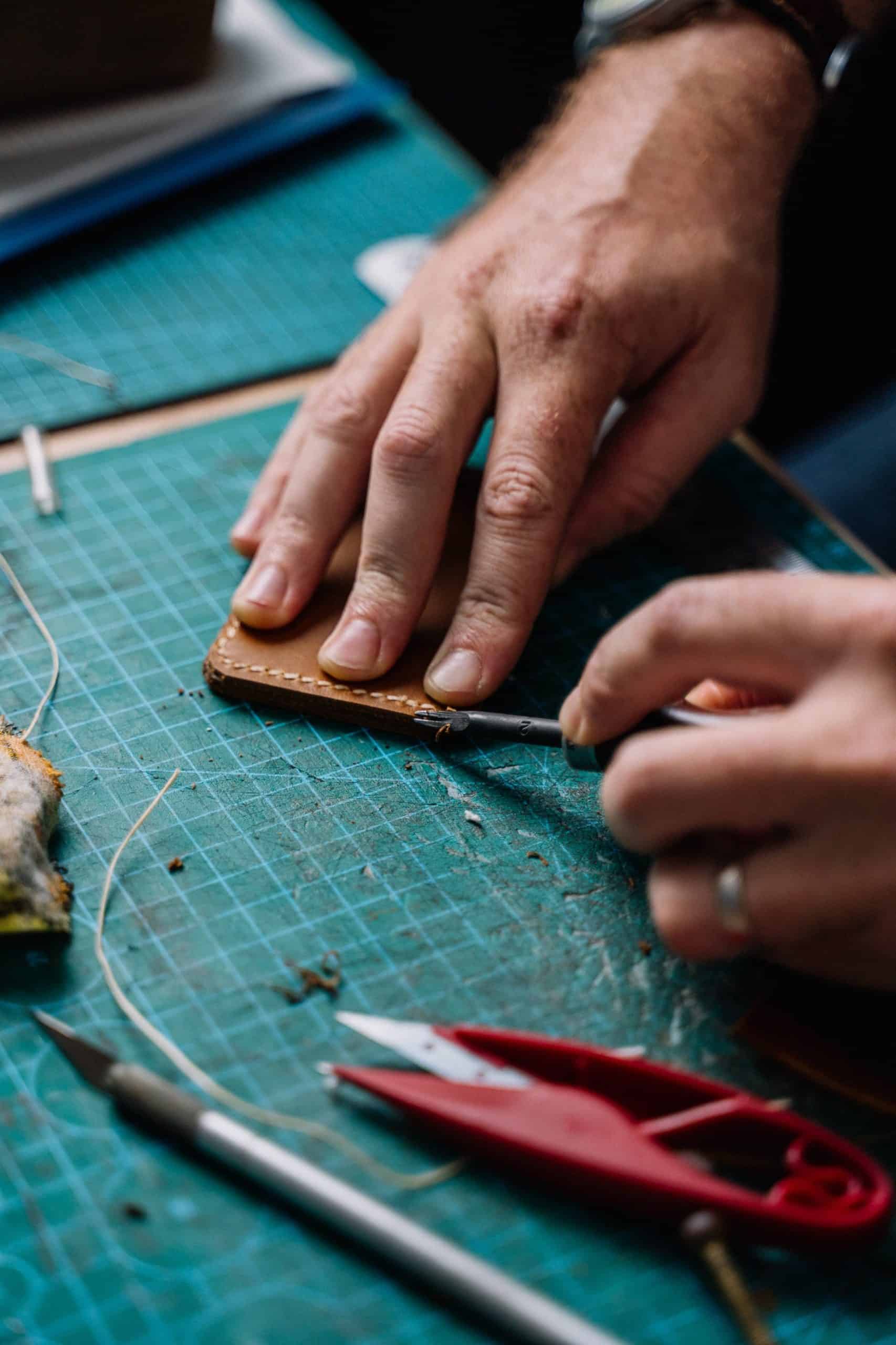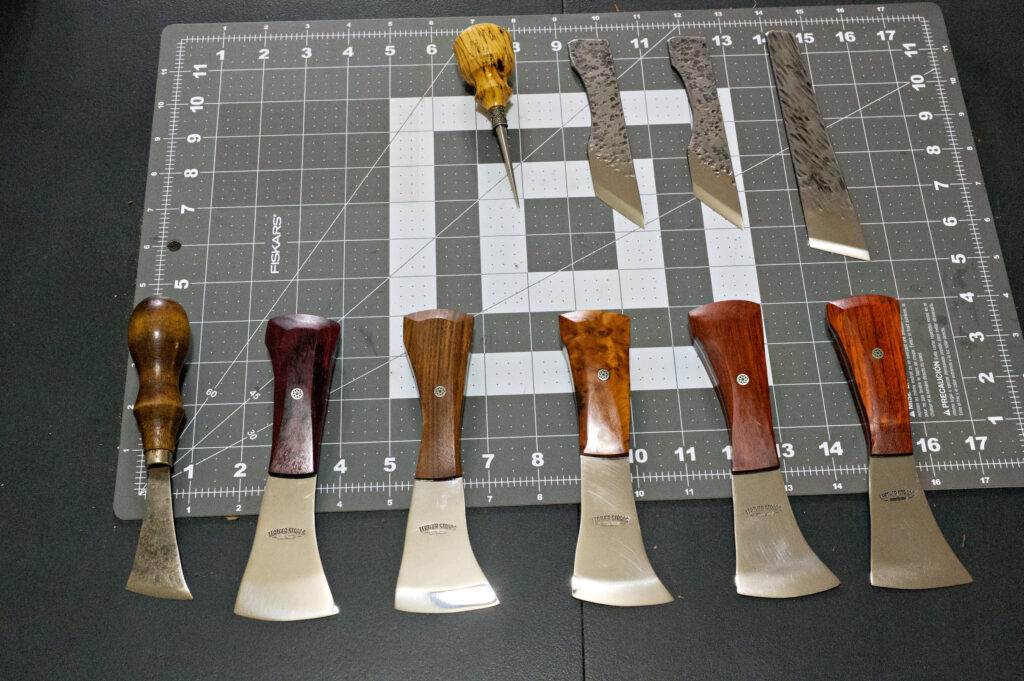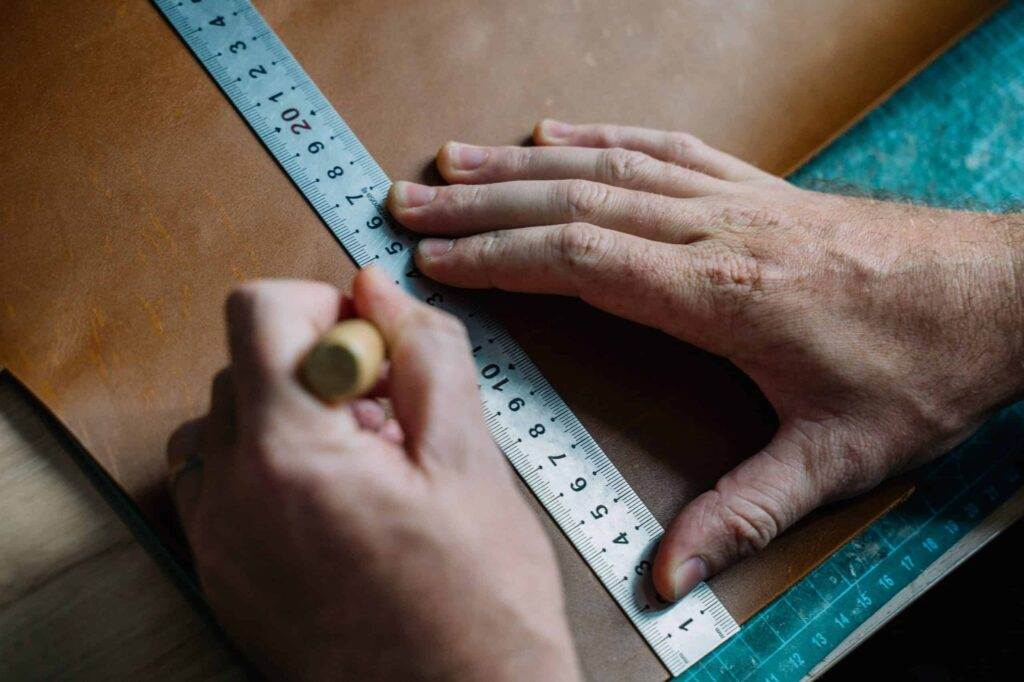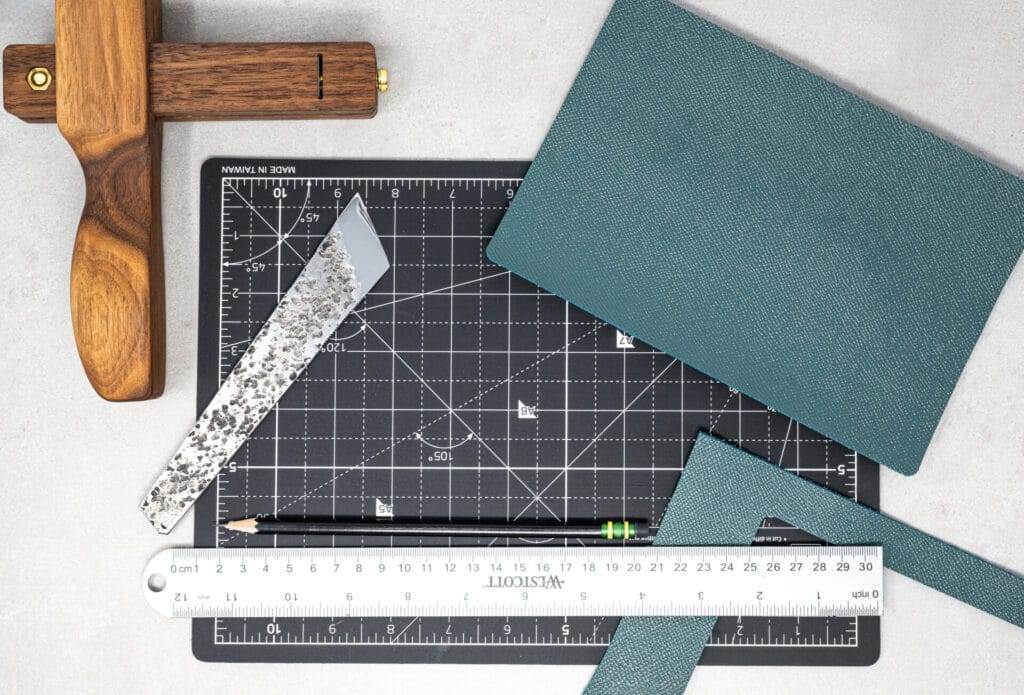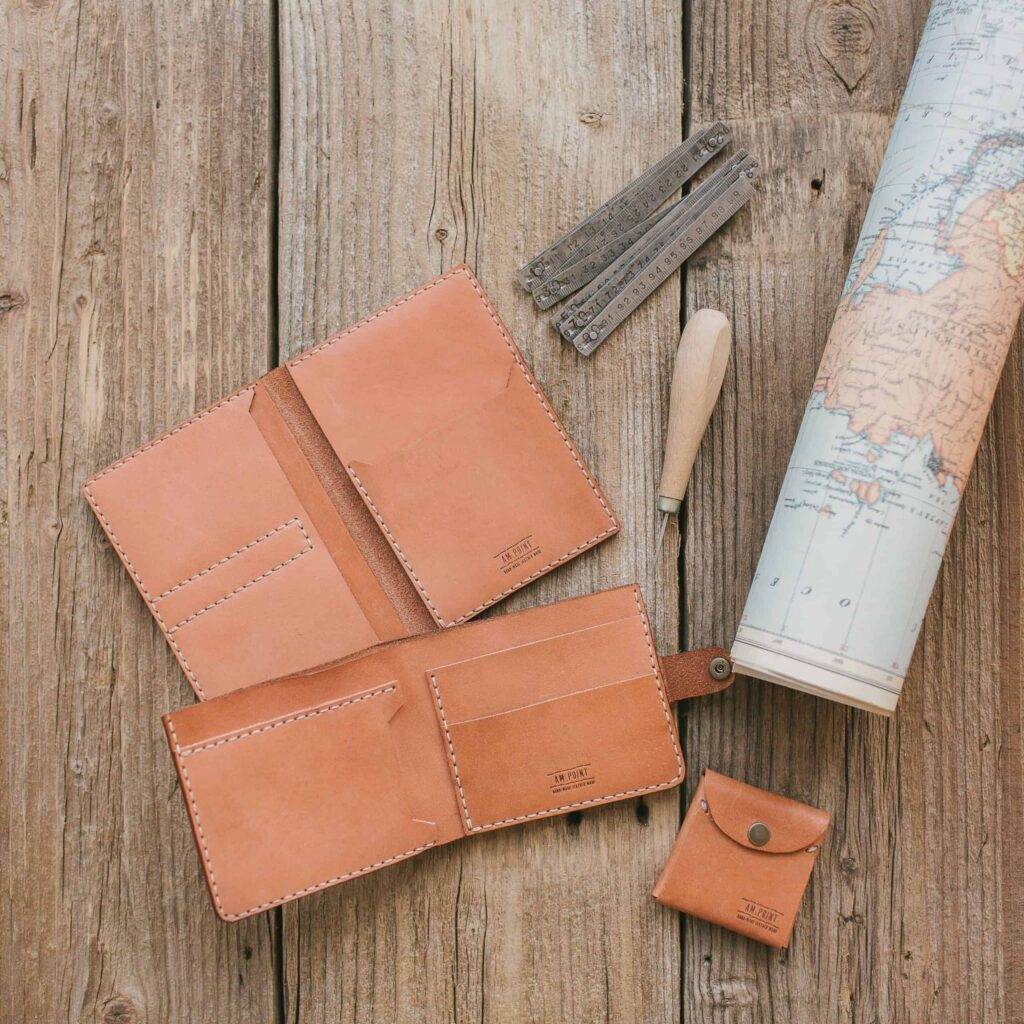Professional Leathercraft Edge Finishing Methods
Leathercraft is an art form that combines creativity with craftsmanship, resulting in beautiful and functional items. One of the most critical aspects of leatherworking is edge finishing, which not only enhances the aesthetic appeal of a piece but also contributes to its durability and longevity. The edges of leather items can often be rough and unrefined, which detracts from the overall quality of the work.
Therefore, mastering edge finishing techniques is essential for any leatherworker who aspires to create professional-grade products. Edge finishing encompasses a variety of methods, each designed to achieve specific results. From burnishing and dyeing to sanding and binding, these techniques can transform raw edges into smooth, polished surfaces that elevate the entire piece.
Understanding the different approaches to edge finishing allows leathercrafters to select the most suitable methods for their projects, ensuring that every item not only looks good but also stands the test of time. In this article, we will explore various edge finishing techniques that can enhance your leathercraft skills and improve the quality of your work.
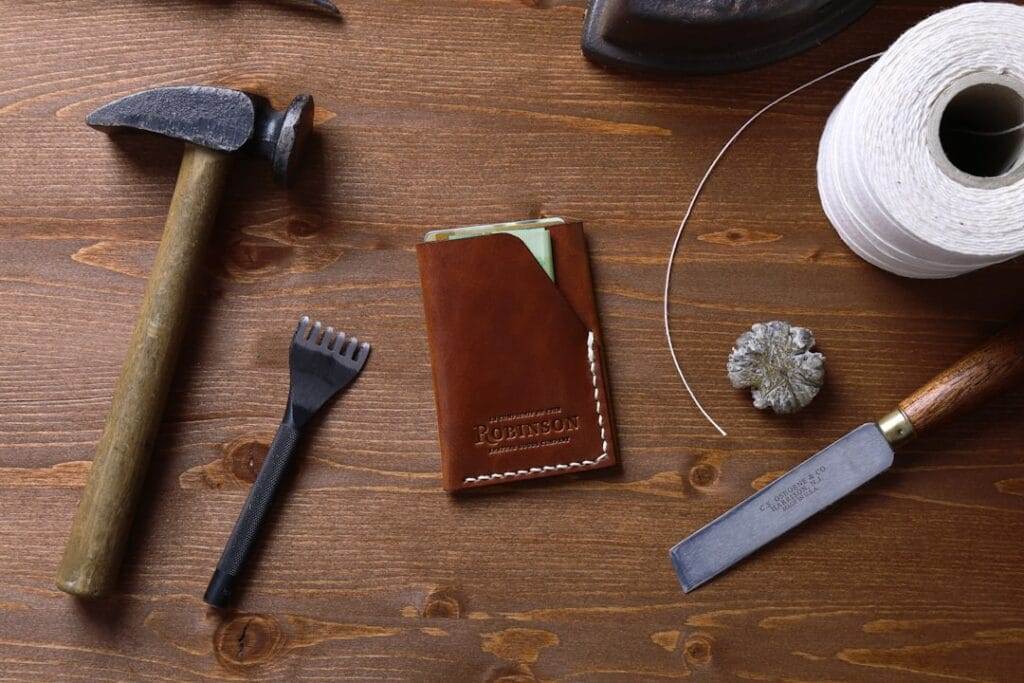
Key Takeaways
- Proper edge finishing is essential for leathercraft to ensure durability and a professional look.
- Burnishing techniques help smooth and seal the edges of leather for a polished finish.
- Edge dyeing and painting methods allow for customization and color coordination with leather projects.
- Edge creasing and beveling techniques add a professional touch and enhance the overall look of leather items.
- Edge sanding and polishing create smooth and refined finishes for leather edges.
Burnishing Techniques for Leather Edges
Burnishing is a fundamental technique in leathercraft that involves smoothing and rounding the edges of leather pieces. This process not only improves the appearance of the edges but also helps to seal them, preventing fraying and wear over time. There are several methods for burnishing leather edges, including using a manual burnisher, a wooden tool, or even a specialized machine.
Each method has its advantages, and the choice often depends on the desired finish and the tools available. To begin burnishing, it is essential to prepare the leather edge properly. This typically involves cutting the leather with a sharp knife or blade to create a clean edge.
Once the edge is cut, it can be moistened slightly with water or a specialized burnishing solution to facilitate the process. The burnisher is then applied to the edge with firm pressure, moving it back and forth along the length of the edge. This friction generates heat, which helps to compress the fibers of the leather, resulting in a smooth and polished finish.
The final result is an edge that not only looks refined but also feels pleasant to the touch.
Edge Dyeing and Painting Methods
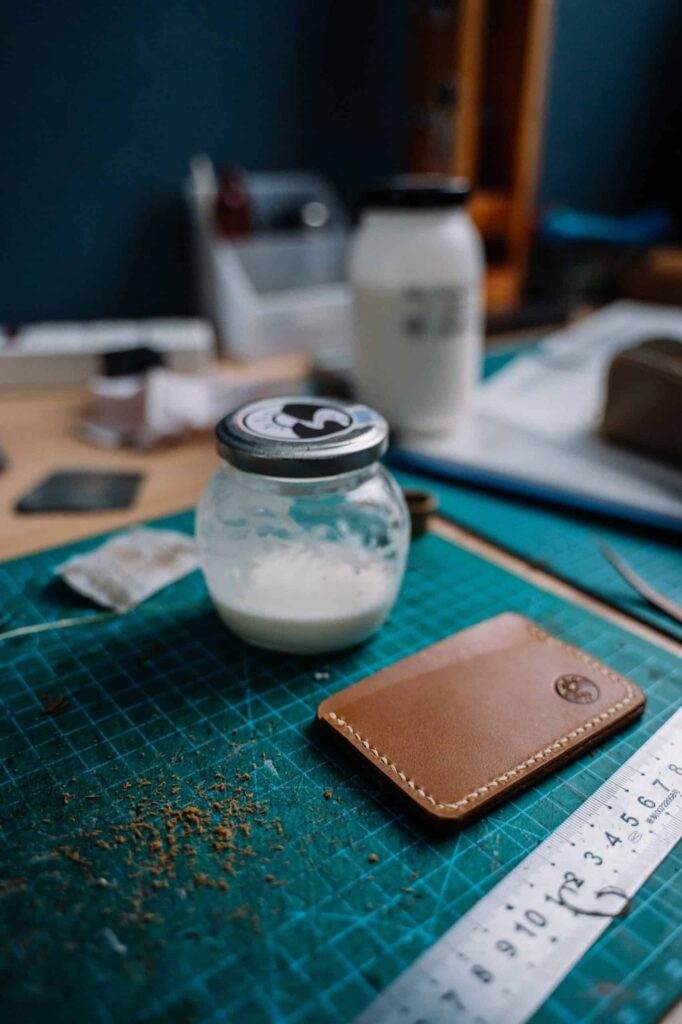
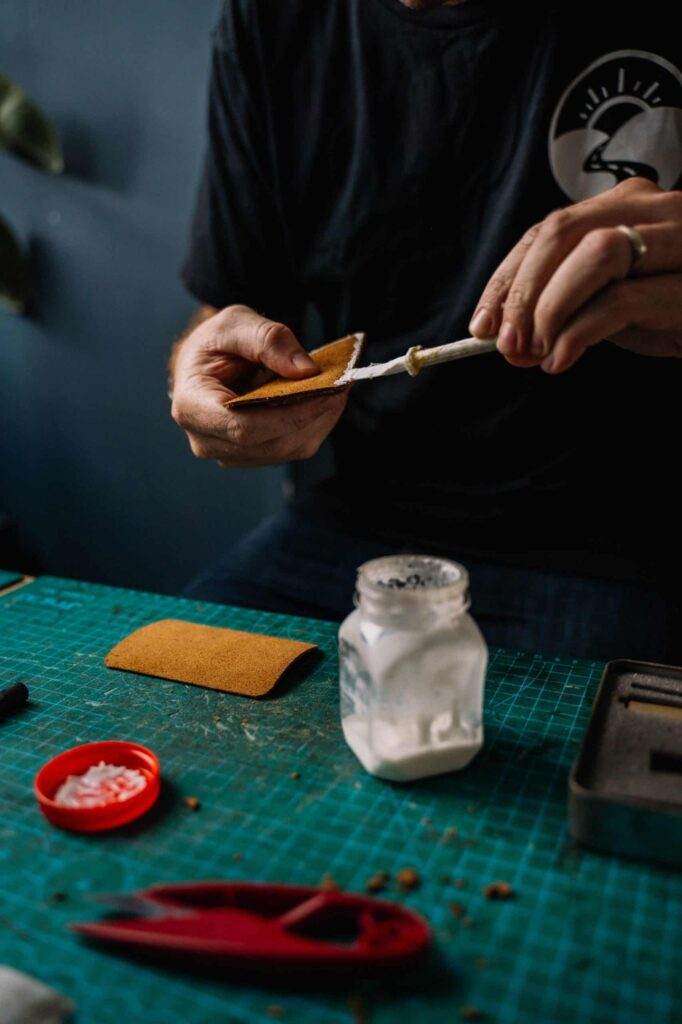
Edge dyeing and painting are techniques used to add color and depth to leather edges, enhancing their visual appeal. These methods can be particularly effective for creating contrast between the edge and the main body of the leather item. There are various products available for dyeing leather edges, including alcohol-based dyes, water-based dyes, and acrylic paints.
Each type of dye or paint offers unique characteristics, making it essential for leatherworkers to choose the right one for their specific project. When dyeing edges, it is crucial to apply the product evenly to avoid streaks or uneven coloration. A small brush or applicator can be used to carefully apply dye along the edge, ensuring that it penetrates into any crevices or imperfections.
For those who prefer a more artistic approach, painting edges can allow for creative expression through patterns or designs. Regardless of the method chosen, proper preparation and application are key to achieving a professional-looking finish. Once dyed or painted, edges can be sealed with a topcoat to protect the color and enhance durability.
Edge Creasing and Beveling for Professional Results
Creasing and beveling are two techniques that can significantly enhance the professionalism of leather edges. Creasing involves creating a defined line along the edge of the leather, which adds dimension and visual interest. This technique is often achieved using a creasing tool or wheel that presses into the leather, leaving a subtle impression.
The result is an edge that appears more structured and intentional. Beveling, on the other hand, involves trimming the edge at an angle to create a sloped surface rather than a straight cut. This technique not only improves aesthetics but also reduces the likelihood of fraying by removing sharp corners that are more prone to wear.
Beveling tools come in various sizes and shapes, allowing leatherworkers to customize their approach based on the thickness of the leather and the desired effect. Together, creasing and beveling can elevate a simple leather project into a polished piece that showcases attention to detail.
Edge Sanding and Polishing for Smooth Finishes
Sanding and polishing are essential steps in achieving smooth finishes on leather edges. Sanding involves using fine-grit sandpaper or sanding blocks to gently smooth out any rough spots or imperfections along the edge. This process helps to create an even surface that is ready for further finishing techniques.
It is important to use light pressure during sanding to avoid damaging the leather or altering its shape. Once sanding is complete, polishing can be performed to add shine and luster to the edges. This can be done using a variety of products, including beeswax or specialized leather conditioners that contain oils designed to nourish and protect the leather.
Applying these products with a soft cloth or applicator allows for even distribution and enhances the overall appearance of the edges. The combination of sanding and polishing not only improves aesthetics but also contributes to the longevity of the leather item by providing an additional layer of protection against wear.
Edge Staining and Antiquing for Unique Effects

Staining: Enhancing Leather’s Natural Beauty
Staining involves applying a colored solution that penetrates into the leather, altering its hue while still allowing some natural texture to show through. This method can be particularly effective for achieving rich tones or highlighting specific areas of a piece.
Antiquing: Adding a Weathered Look
Antiquing takes this concept further by adding darker shades into crevices or along edges to create a weathered look. This technique often involves using a gel stain or antiquing solution that is applied selectively, allowing for greater control over where color is deposited. The result is an edge that appears aged and full of character, making it ideal for rustic or vintage-style projects.
Mastering the Techniques
Both staining and antiquing require careful application and consideration of color combinations to achieve desired effects without overwhelming the natural beauty of the leather.
Edge Binding and Piping for Added Durability
Edge binding and piping are advanced techniques used in leathercraft that not only enhance aesthetics but also provide added durability to edges. Binding involves wrapping a strip of leather or fabric around the edge of a piece, effectively encasing it in a protective layer. This method is particularly useful for items that will experience significant wear, such as bags or wallets, as it helps prevent fraying and damage over time.
Piping takes this concept a step further by incorporating a cord or filler material within the binding strip, creating a raised edge that adds dimension and visual interest. This technique can be particularly striking when contrasting colors are used for both the piping and binding materials. Both methods require careful stitching to ensure that they remain securely attached while maintaining an attractive appearance.
By employing edge binding or piping techniques, leatherworkers can create pieces that are not only visually appealing but also built to withstand daily use.
Choosing the Right Edge Finishing Method for Your Leather Projects
Selecting the appropriate edge finishing method is crucial for achieving professional results in leathercraft projects. Each technique offers unique benefits and can dramatically alter both the appearance and durability of finished items. Whether you opt for burnishing for smoothness, dyeing for color enhancement, or binding for added protection, understanding these methods allows you to tailor your approach based on your specific needs.
Ultimately, mastering edge finishing techniques requires practice and experimentation. As you develop your skills in this area, you will find that each method complements others, allowing you to create truly exceptional pieces that reflect your craftsmanship and creativity. By investing time in learning these techniques, you will elevate your leatherworking projects from simple creations to stunning works of art that stand out in both quality and design.
FAQs
What are the different methods for finishing leather edges in professional leathercraft?
There are several methods for finishing leather edges in professional leathercraft, including burnishing, edge paint, edge dye, and edge beveling.
What is burnishing in leathercraft?
Burnishing is a technique used to smooth and polish the edges of leather by rubbing them with a slicker tool or bone folder to create a glossy finish.
What is edge paint in leathercraft?
Edge paint is a type of paint specifically designed for leather edges, used to create a smooth and durable finish that also adds a pop of color to the edges of the leather.
What is edge dye in leathercraft?
Edge dye is a liquid dye used to color the edges of leather, providing a clean and professional finish while also protecting the edges from wear and tear.
What is edge beveling in leathercraft?
Edge beveling is the process of using a beveling tool to trim and round the edges of leather, creating a smooth and polished look while also reducing the risk of the edges catching or fraying.
Which edge finishing method is best for different types of leather projects?
The best edge finishing method for a leather project depends on the type of leather, the desired look, and the level of durability required. Burnishing is great for a natural, glossy finish, edge paint adds color and durability, edge dye provides a clean and professional look, and edge beveling creates a smooth and polished edge.

